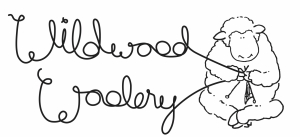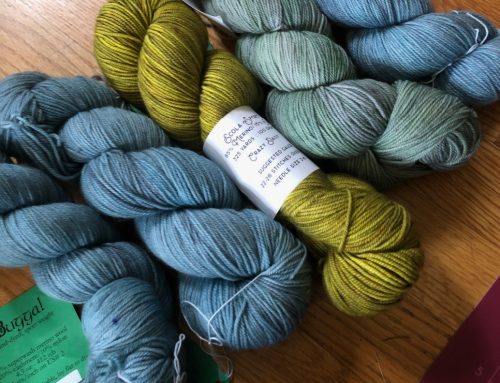First, you need to know that I think of myself as a knitter. That doesn’t mean that my only focus is knitting, just that, if you said I could only keep one of the three, knitting would win over weaving and spinning every time. Somehow it satisfies all of the things I need. So I work pretty hard at doing it well and always taking on new challenges. That is why this class at the retreat threw me for a loop. Let me explain.
Stephanie Pearl-McPhee (aka the Yarn Harlot) had us looking at how knitting and knitting patterns have changed in recent history – becoming more detailed and prescriptive. The pattern for the little sample shown above was intended to provide us with a few challenges, some ideas about flexible cast ons and cast offs, and a foundation for the other classroom discussions. It was written assuming we knew our way around a knitting pattern.
Well, I thought I knew my way around a knitting pattern. Imagine how I felt as I struggled and struggled to knit the few rows of “close” knitting (lace pattern stitches on both the right and wrong sides). I have knit patterns like this before. Successfully. Without gnashing my teeth. For some reason, this time every row involved undoing what I had done 3 or 4 times. And finally resigning myself to only partial success in order to move on to the edging. The incorrect effort is the end at the top of the photo.
But I couldn’t leave it there! I am all about grim persistence. So I came home, picked up the live stitches at the other end of the sample, and started knitting. In about 15 minutes, I had knit all 8 rows – correctly. What was the difference? Well, it is true that I was riding in a car the second time, not in a class of people talking and teachers teaching. But I think that is a cop out. The difference was internal. With the second effort (see the bottom part of the sample), I knit the way I knit, with no external influences. So every row, I “SAW” the pattern, the rhythm of the stitches, the cadence. I followed that rhythm. It worked fine. For whatever reason, I didn’t take that approach in the classroom and it defeated me. It sounds trite, but “to thine own self be true,” right?
And I don’t think I will run into the problem again. Now that I have consciously thought about how I do this, I can’t be fooled again. Well, not for long, anyway.
p.s. As I look at the picture above, I cringe. We did, after all, spend a lot of time in this class discussing how to appropriately dress your lace and I clearly manhandled this poor sample.







Leave A Comment